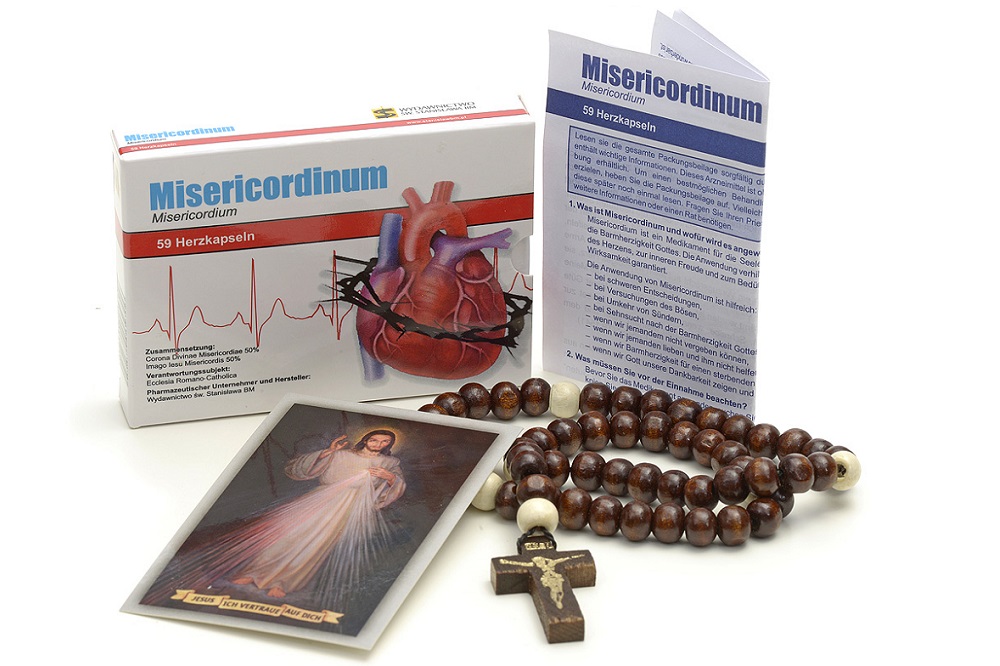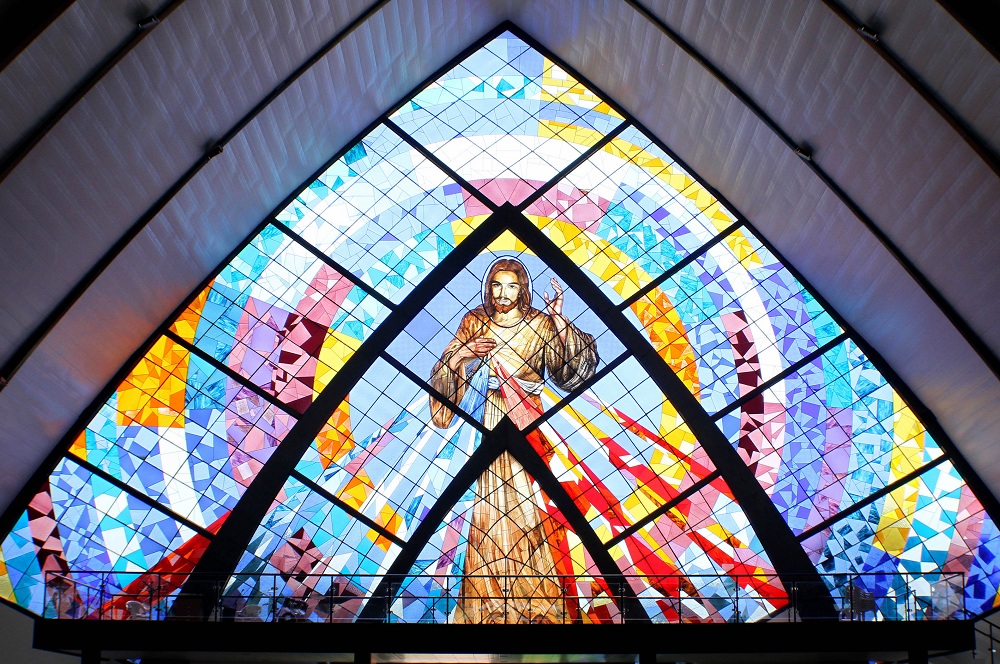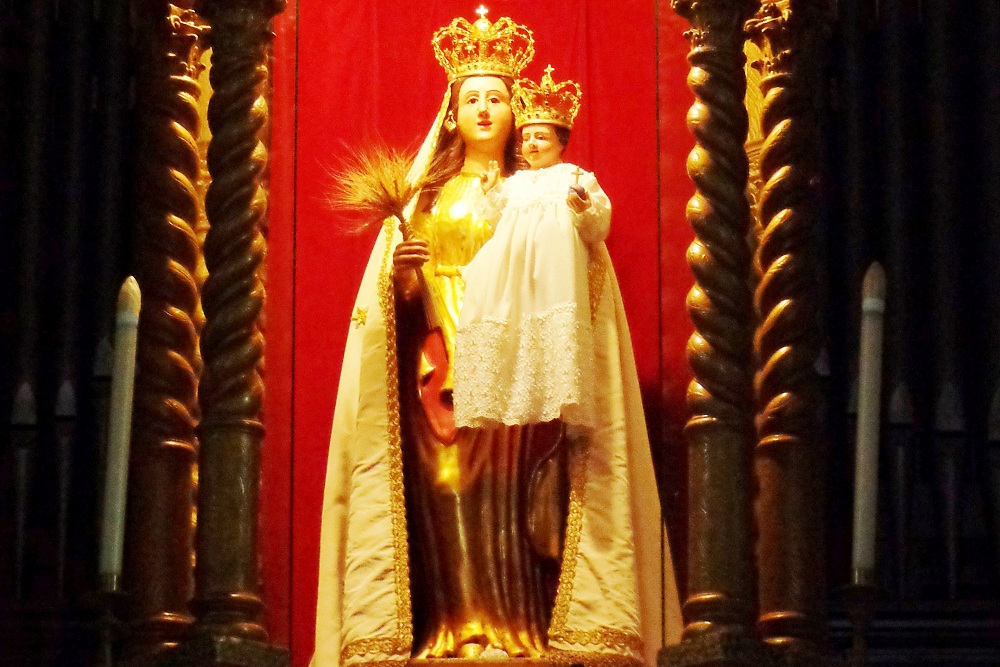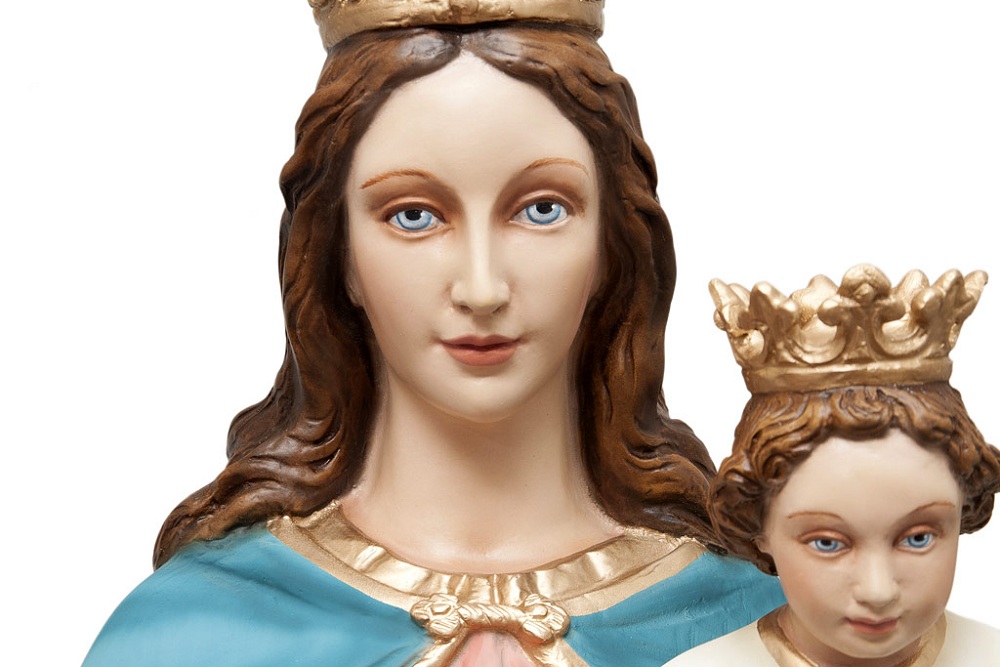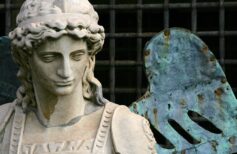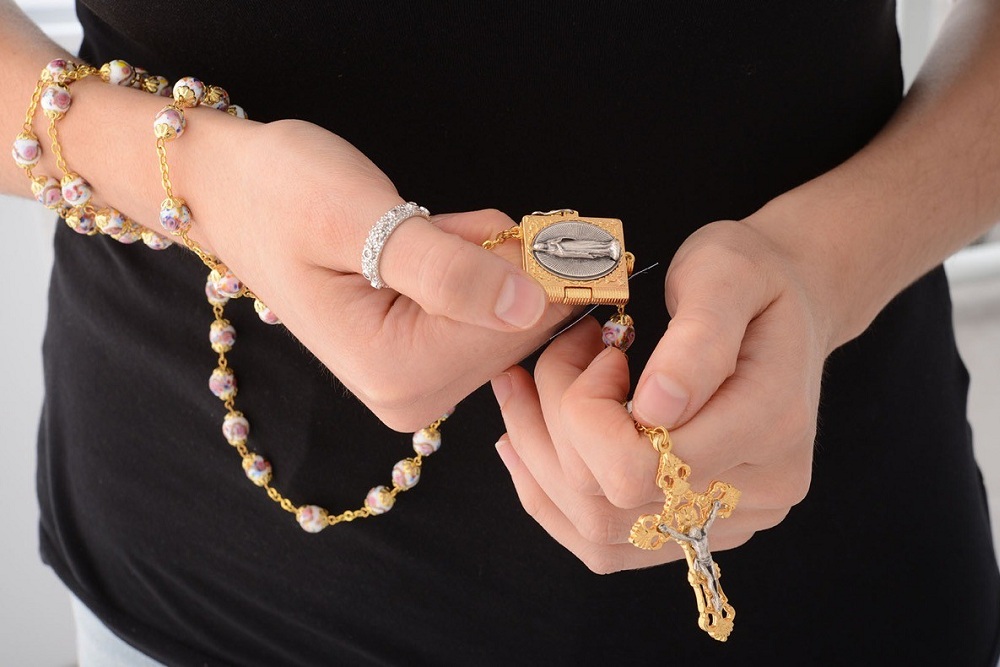The Chaplet of Divine Mercy is a devotional prayer that guarantees those who recite it, especially at the point of death, the grace of conversion and the forgiveness of all sins. It is also a prayer that invokes God’s mercy on all humanity, offering the Passion and Love of Jesus, His suffering, as a sacrifice, to bring God closer to men.
Its origin is linked to the figure of Sister Maria Faustina Kowalska, a religious woman who lived in the early 1900s, a member of the Congregation of the Sisters of the Blessed Virgin Mary of Mercy who was canonized in 2000 by Pope John Paul II.
The many graces she received in her short life, the visions, the miracles, the revelations of which she was the bearer, made her the main propagator of devotions to the Merciful Jesus. Jesus himself, on one of the occasions when he appeared to her, called her the “Secretary of Divine Mercy”, and as an Apostle of Divine Mercy, she is worshiped everywhere.
Born and raised in a very religious but poor family, Sister Faustina showed a precocious and authentic vocation, but had to wait a long time before she could embrace a religious life. With poor health, she died at thirty-three, but left a testimony of faith and religious fervor of great intensity and humanity, a complete union with God and his Will.
She was a great populariser of the Divine Mercy cult, after an apparition of Jesus who, dressed in white and in blessing, ordered her to depict him and spread His image, promising that anyone who venerated him would know salvation and the eternal life. This image was created for the first time by a Lithuanian artist, following instructions from Sister Faustina’s spiritual father and under strict control of the latter. It depicts Jesus wearing a white robe, his right hand raised and two rays coming out of his heart, a white one representing water and a red one representing blood. Always under the indication of Sister Faustina, the image shows the inscription “Jezu, ufam tobie” (Jesus, I trust in you).
On the occasion of a later apparition, Jesus taught her a particular form of prayer, which would have guaranteed His mercy to those who had recited it, especially at the time of death. This is the Chaplet of Divine Mercy.
With this prayer, we address ourselves directly to God by offering him the body, blood and soul of His Son and our Saviour Jesus Christ. The suffering of Jesus brings God closer to men, places the salvation of all mankind in His hands and in His Will. The graces that can be requested through this prayer, the hope of Salvation, are commensurate with the full trust placed in the mercy of Jesus and in the Will of God, to which ours can only adapt and entrust himself. In fact, Jesus told Sister Faustina: “For the recitation of this Chaplet I like to grant everything that will ask me if this will conform to my will.”
The Chaplet of Divine Mercy also guarantees the grace of being able to die peacefully and in peace. This promise is not only valid for those who recite it, but also for those who are dying and have someone else to pray for them. Jesus assured Sister Faustina that when someone says this Chaplet next to a dying man, He will place himself between the soul of the latter and His Father, not as a judge, but as a saviour, and His infinite Mercy will welcome that soul.
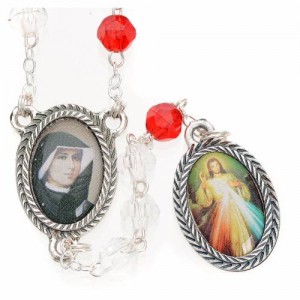
Chaplet of the Divine Mercy
The Chaplet is also a hope for sinners, even the most ardent ones. Jesus indicated it to the priests as the last tablet of salvation for those who spent their lives in sin. According to Sister Faustina in her diaries, Jesus said: “When you recite this prayer with a repentant heart and with faith for some sinner, I will grant him the grace of conversion …” It will be enough to recite this Chaplet only once, and the infinite mercy of God will descend on the most hardened sinner, freeing his soul from guilt and granting him eternal salvation. Sister Faustina spoke of having been invited by Jesus to recite the Chaplet at the bedside of a sinner. His guardian angel was at his side, helpless before his suffering, while a host of demons already anticipated his soul. But thanks to Faustina’s intervention and to the recitation of the Chaplet of Divine Mercy the demons disappeared and the poor man could breathe in peace and grace.
It is a good idea to recite the Chaplet of Divine Mercy every day, or at least for nine consecutive days, preferably at 3 pm, the hour when Jesus gave his life for us. In one of her diaries, Sister Faustina wrote that Jesus, speaking to her about his death, told her: “In that hour you will get everything for yourself and for others; in that hour grace was given to the whole world, Mercy won justice.” Reciting the Chaplet at that time is as if we find ourselves with the spirit under the Cross of Christ, and beg for God’s mercy for ourselves and for the whole world, by virtue of His passion. Jesus said to Sister Faustina: “At three o’clock in the afternoon, implore My Mercy especially for sinners and even for a brief moment immerse yourself in My Passion, especially in my abandonment at the time of death. It is an hour of great Mercy for the whole world.”
It takes only 5 minutes
It takes only five minutes, and it is an act of truly comforting devotion, which infuses peace with joy.
To recite the chaplet of Divine Mercy it is sufficient to use the crown of the Holy Rosary, even though, with the diffusion of prayer, specially created rosaries were made, with a medal depicting the Merciful Jesus and a portrait of Sister Faustina.
We begin by reciting the Sign of the Cross, followed by an Our Father, a Hail Mary and the Creed.
Each of the five major beads is recited: “Eternal Father, I offer You the Body and the Blood, the Soul and the Divinity of Your most beloved Son and Our Lord, Jesus Christ, in expiation of our sins and for those of the whole world”, while for each of the fifty minor beads you say: “For your painful Passion, have mercy on us and on the whole world.”
The Chaplet continues on arriving at the end of the Rosary and repeating three times: “Holy God, Holy Strength, Holy Immortal, have mercy on us and on the whole world” and ends with the invocation: “Oh Blood and Water that spring from the Heart of Jesus as a source of mercy for us, I trust in you!” and with the sign of the cross.
In summary:
Sign of the cross
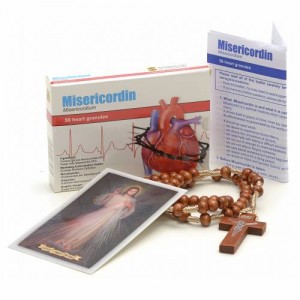
Misericordina of Pope Francis
Lord’s Prayer
Ave Maria
APOSTOLIC CREDITS
On the 5 beads of the Our Father, we recite:
Eternal Father, I offer You the Body and the Blood, the Soul and the Divinity of Your Most Beloved Son and our Lord Jesus Christ, in expiation of our sins and for those of the whole world.
On the 50 beads of the Ave Maria we recite:
For His painful Passion, have Mercy of us and of the whole world.
Finally, we repeat 3 times:
Holy God, Holy Strength, Holy Immortal, have mercy on us and on the whole world.
In conclusion, before the Sign of the Cross, we recite:
Oh Blood and Water that springs from the Heart of Jesus, as Source of Mercy for us, I trust in You.

